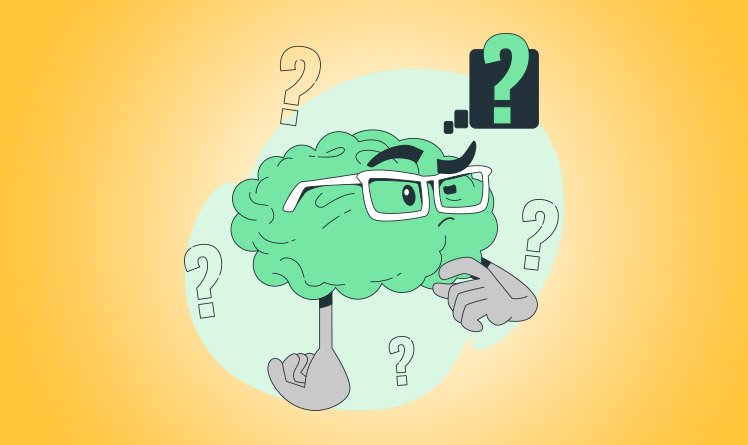Theory of Mind: What it is, how it develops, and why it matters

|
Getting your Trinity Audio player ready...
|
Have you ever noticed how we can imagine what another person is feeling or thinking? How we can understand, even without words, whether someone is uncomfortable or happy? This ability isn't magic—it has a name and a scientific basis: Theory of Mind.
Understanding what's going on in another person's mind is one of the pillars of human coexistence. In this sense, it's what enables dialogue, empathy, care, and even conflict. Theory of Mind is, therefore, a relevant aspect of human cognition, and understanding it is essential for those who wish to evolve emotionally, improve relationships, and even lead more intelligently.
In this article, we will dive deep into this concept, exploring everything from its definition to its practical implications in areas such as education, NLP, mindfulness and positive psychology. Let's go together?
What is Theory of Mind?
Theory of Mind (ToM) Theory of Mind) is the human ability to attribute mental states—such as beliefs, desires, intentions, and emotions—to oneself and others. This ability allows one to predict and interpret behaviors based on these mental states, even when they differ from reality or one's own perspective. In other words, it is the ability to "read another's mind," not literally, but cognitively.
“Theory of Mind is the ability to attribute mental states to oneself and others, such as thoughts, beliefs, and emotions, in order to predict their behavior.”
This ability allows us to predict behaviors, interpret actions, and adjust our emotional responses more intelligently. Without Theory of Mind, we would live in a lonely world, each trapped in their own mind, unable to connect with the experience of others.
Theory of mind and empathy: are they the same thing?
Not exactly. The empathy is the ability to feel what another person feels. On the other hand, Theory of Mind involves a previous step: perceiving what another person feels or thinks. Emotional empathy is more connected to the heart; Theory of Mind, to the brain. And together, they form a powerful duo for human relationships.
How does Theory of Mind develop?
In childhood: the awakening of social consciousness
The first signs of Theory of Mind appear around age 2, when children begin to understand that other people may want things differently from them. By age 3, they already understand that someone can hold false beliefs. And between ages 4 and 5, the ability to understand that others may have thoughts different from their own emerges—even if those thoughts are false in relation to reality.
This milestone is so important that scientists use a classic experiment called the “false belief test” (like the story of Sally and Anne) to identify whether a child has developed this skill.
The role of language and environment
Language is essential. Children who live with adults who verbalize feelings and thoughts ("you seem angry," "daddy is tired") tend to develop Theory of Mind earlier. Emotionally rich environments encourage children to step outside their own world and see others more clearly.
Facial Expressions: Windows into Another Person's Mind
One of the most direct ways to access other people's mental states is through facial expressionsSmiles, frowns, fixed or averted gaze—all these signals help to convey what the other person is feeling or thinking. It's as if the face is a reflection of the mind.
Theory of Mind depends, in part, on our ability to observe and interpret these nonverbal cues. And the human brain is naturally trained for this. In this sense, areas such as the amygdala and fusiform gyrus are directly involved in the perception and decoding of facial expressions.
“Reading facial expressions is a fundamental tool for activating Theory of Mind and interpreting what the other person is feeling or thinking.”
In fact, studies show that people with Theory of Mind difficulties—such as some cases of autism—have more difficulty correctly identifying basic emotions in other people's faces. On the other hand, specific training that focuses on facial reading helps strengthen this skill.
Why is Theory of Mind important?
For coexistence and empathy
Knowing how to interpret what others think or feel is what sustains friendships, relationships, negotiations, partnerships, and practically any form of human coexistence.
“Theory of Mind is crucial for building healthy relationships, resolving conflicts, and developing empathy.”
For emotional self-regulation
By understanding the impact their actions and words have on others, a person tends to develop greater emotional control and emotional responsibility. In other words, thinking about others before reacting.
Towards building a more conscious society
Individuals with high Theory of Mind abilities tend to engage more in prosocial behaviors, such as helping, comforting, and cooperating. This directly impacts more supportive and less violent communities.
Theory of Mind in Positive Psychology and Mindfulness
Cultivating compassion and self-knowledge
Positive Psychology seeks to promote human flourishingAnd there is no true flourishing without healthy relationships. Practices such as active listening, nonviolent communication, and compassion meditation expand the ability to see others with greater empathy—thus strengthening the Theory of Mind.
Already the mindfulness, with its mindfulness approach, invites us to observe thoughts and emotions without judgment—first in ourselves, then in others. This develops the "social awareness muscle," essential for improving our perception of what others may be feeling.
Dysfunctions in Theory of Mind
When there are difficulties: autism, alexithymia and disorders
People with Autism Spectrum Disorder (ASD) often have difficulties with Theory of Mind. Therefore, they may have difficulty understanding that others do not share their perspective.
Alexithymia—difficulty identifying and naming emotions—also interferes with reading others' mental states. Similarly, disorders such as schizophrenia, borderline personality disorder, and major depression can also negatively affect this ability.
Is it possible to train Theory of Mind?
Yes! Therapeutic interventions, social games, role-playing, and reflection exercises help strengthen this skill, even in adults.
Practical Applications of Theory of Mind
In emotional education
Teaching children and adolescents to recognize and name emotions—their own and those of others—is a fundamental step. This helps create more aware, respectful, and collaborative adults.
In coaching, NLP and personal development
In Neuro-Linguistic Programming (NLP), Theory of Mind is used to adjust communication to the other person's perception. Thus, techniques such as mirroring, calibration, and rapport depend on the accurate reading of the interlocutor's emotional state.
“Theory of Mind is a powerful ally for those who want to communicate better, lead with empathy, and develop personally.”
In leadership and in the workplace
Leaders who can interpret what their team is thinking and feeling are more likely to inspire, retain talent, and resolve conflicts with emotional intelligence. This way, environments with emotionally aware leaders tend to be more productive and harmonious.
How to develop Theory of Mind in practice
Developing Theory of Mind is like strengthening a social and emotional muscle. Like any skill, it can be improved with practice and intention. Here are some effective strategies:
- Practice active listening: listen carefully, without interrupting, seeking to understand the other person's point of view without judging.
- Read literary fiction: Studies show that reading novels, especially those that explore complex characters, stimulates areas of the brain linked to Theory of Mind.
- Reflect on past conflicts: ask yourself: What was the other person feeling? What intentions might they have had?
- Use compassion and mindfulness meditations: they help develop awareness of your own mental states and those of others.
- Talk about feelings with children and adults: naming emotions in different contexts encourages emotional reading.
“We can develop Theory of Mind by practicing active listening, reflecting on other people's emotions, reading fiction, and cultivating mindfulness.”
In short…
Theory of Mind is one of the most extraordinary human abilities. After all, it's what takes us out of our ego bubble and connects us with the world around us. Therefore, developing this skill goes far beyond cognition: it's an act of humanity.
In an increasingly polarized, competitive, and fast-paced world, the ability to understand others is a true superpower. And like any skill, it can—and should—be trained. After all, the more empathetic we are, the more human we become.
Theory of Mind Frequently Asked Questions (FAQ)
1. What is Theory of Mind?
Theory of Mind is the ability to attribute mental states—such as thoughts, beliefs, desires, and emotions—to oneself and others, and predict their behavior based on these states.
2. At what age does Theory of Mind begin to develop?
Usually between 2 and 5 years of age, with important milestones around age 4, when the child understands that others may have false beliefs.
3. What is the difference between Theory of Mind and empathy?
Theory of Mind is a cognitive ability to understand what others think or feel. Empathy is the emotional ability to empathize with others. The two complement each other.
4. How can I develop my Theory of Mind?
Through active listening, reading fiction, and practices of mindfulness, compassion exercises and social experiences that encourage observation of others.
5. Can Theory of Mind be used in the workplace?
Yes! It's essential for leading with empathy, resolving conflicts, and improving interpersonal communication within teams.
Image: Freepik

Marcel Castilho is an expert in neuromarketing, neuroscience, mindfulness and positive psychology. In addition to being an advertiser, he also has a Master's degree in NLP – Neurolinguistic Programming. As the owner and founder of the communications agency VeroCom and also of the digital agency Vero Contents, he has been studying human behavior for over 30 years.

